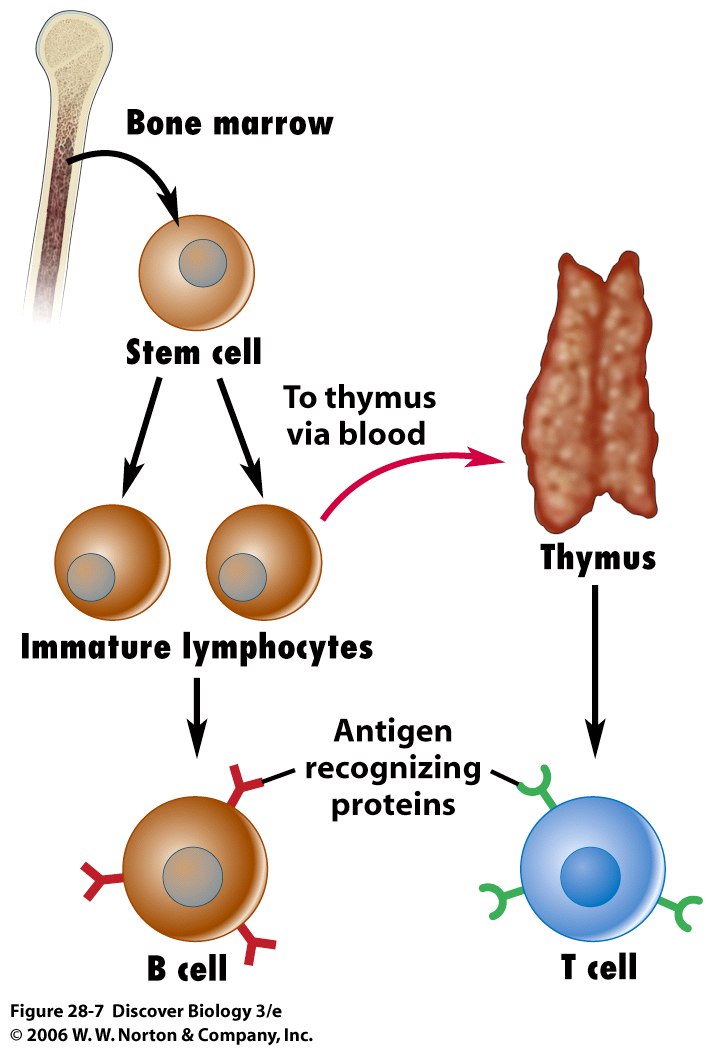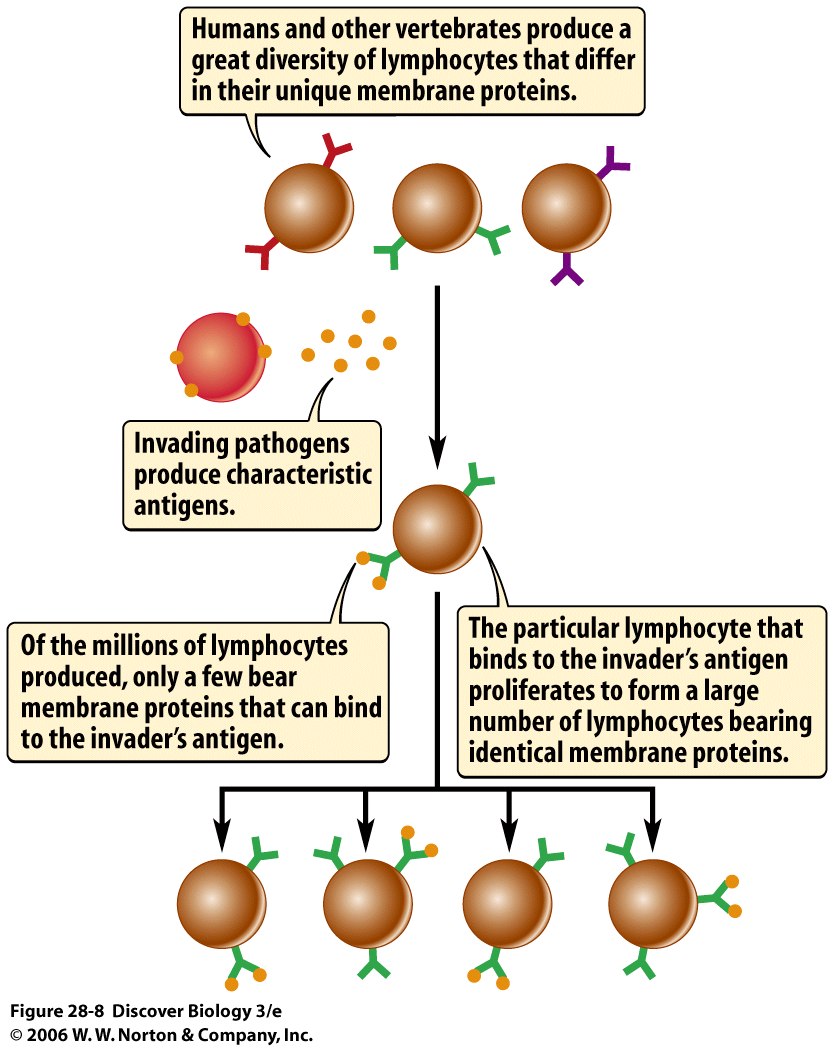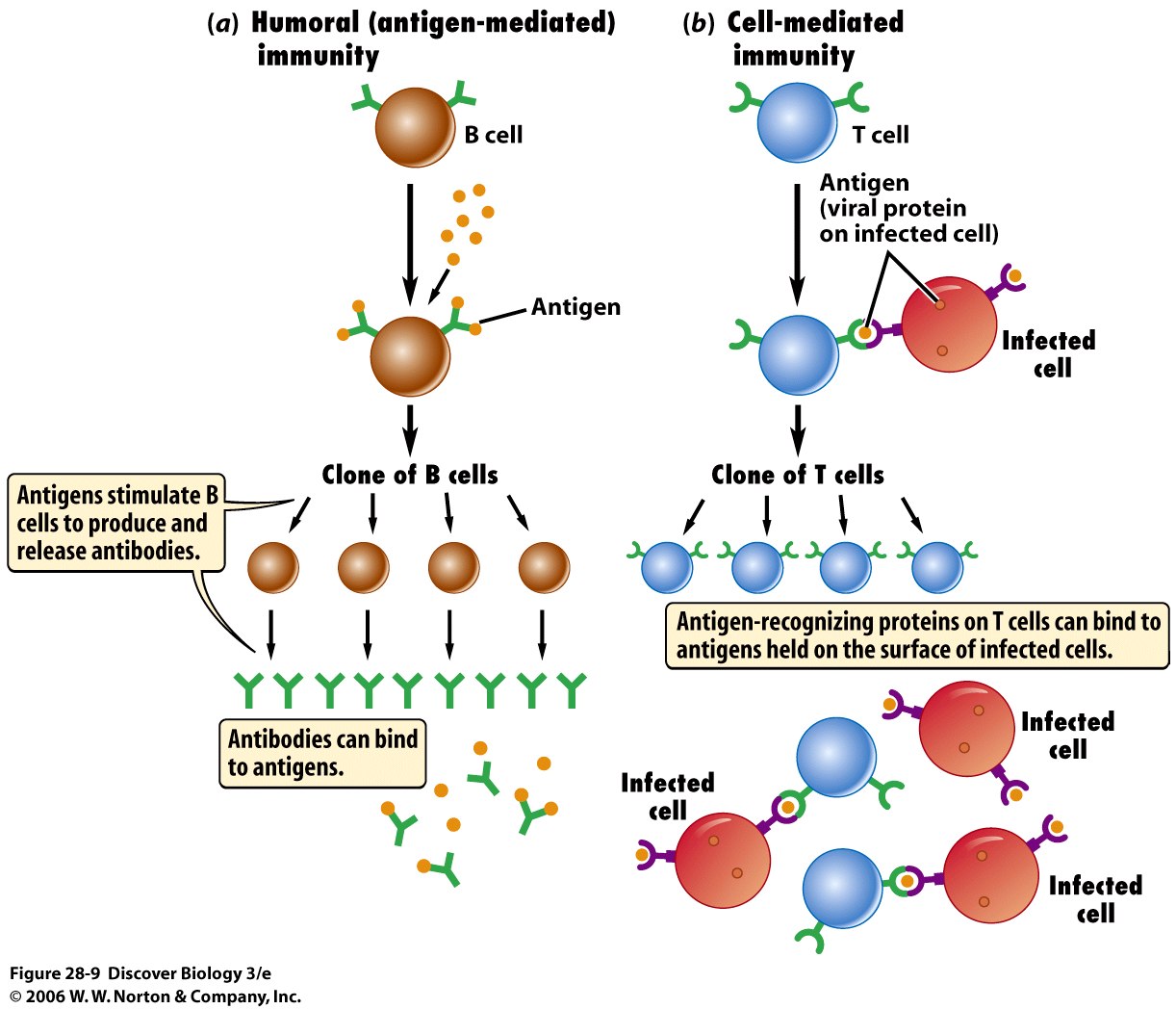Lecture 21-22 Preview
"It's a jungle out there"--Organisms need to protect themselves from predators and the elements.
There are different lines of defense against pathogens aka infectious agents (virus, bacterium, protist, fungus, or small invertebrate). Each line of defense requires energy to maintain.
First line of defense: coverings and secretions (tears, mucus, etc)
Integumentary system and/or skin and associated glands = major part of first line of defense. Non-specific responses to attack include plugging any breaks in the covering, marking invading cells with proteins, having white blood cells attack and engulf marked invading cells.
Vertebrates also have a specific defense response, which remembers particular kinds of invaders, by their antigens (molecules on their surfaces with specific shapes).


-killer T lymphocytes phagocytose viruses or cells carrying the antigen to which their membrane protein binds
-helper T lymphocytes stimulate the production of B and T lymphocytes
Lymphocytes are concentrated in the lymph nodes of the immune or lymph system

After the invader has been removed, a few B and T memory cells with the antibody or membrane protein recognizing the invader's antigen remain. If the same antigen is encountered again, the memory cells can divide rapidly, and there is a quicker response.

